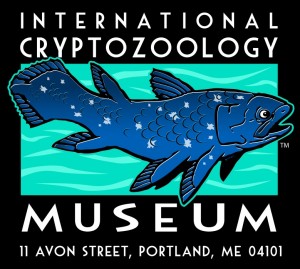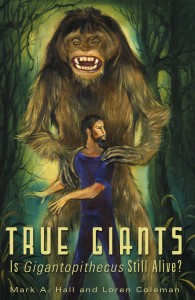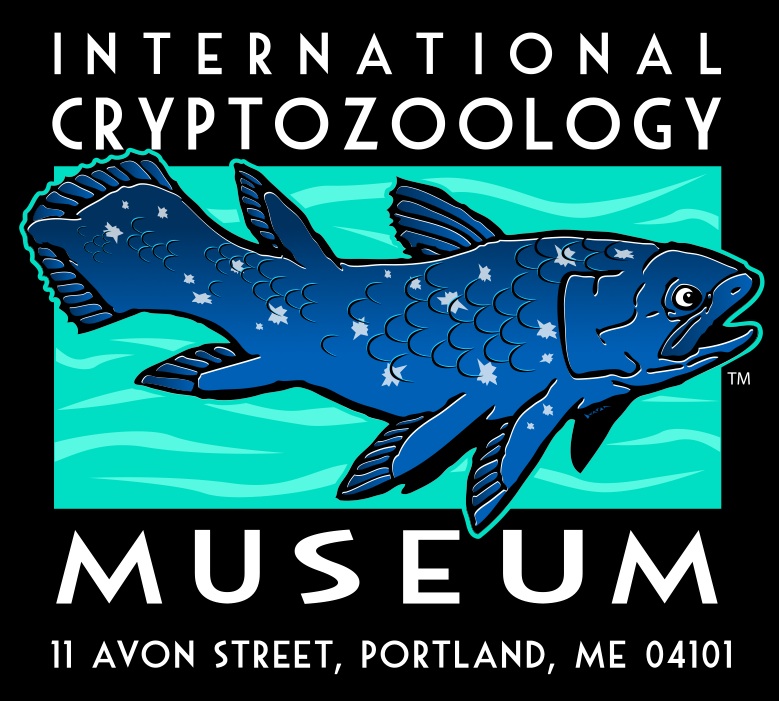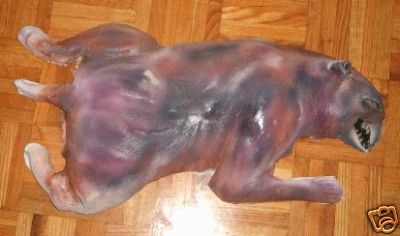
November 2, 2011
Binnall of America has uploaded a new one hour and 51 minute program. Click here to listen to it free.
The following is Tim Binnall’s summary hints of what you will find in the show:
Making his long-awaited return to BoA:Audio, the iconic Loren Coleman joins us for an in-depth and richly arrayed conversation about cryptozoology. We’ll talk about Loren’s amazing International Cryptozoology Museum (11 Avon Street, Portland, Maine) and have a lengthy discussion on Bigfoot as well as the state of Bigfoot research. We’ll also cover a veritable menagerie of cryptids including the Orang Pendek, Yeti, the Loch Ness Monster, Champ, Ogopogo, the Montauk Monster, Alien Big Cats, Chupacabras, Thunderbirds and even the Tazelwurm.
It’s a conversation which spans the pantheon of cryptozoology’s most famous and infamous creatures with the legendary Loren Coleman.

Full Preview: We kick things off by finding out about Loren’s International Cryptozoology Museum, which celebrates its 2nd anniversary and moves to a larger location (at 11 Avon Street) in Portland, Maine on October 30th. Loren details the origins and evolution of the museum, which began in his home in 2003 and, ultimately, became an international sensation when it opened its doors to the public in 2009. Loren discusses the massive media coverage that the museum has received as well as the reaction from skeptics and pop culture anthropologists. This leads to some discussion on how the museum serves as a unique research opportunity as it affords Loren the chance to see a wide array of visitors with varying degrees of cryptozological interests and beliefs. We also reflect on how the museum serves as a clearinghouse of crypto materials so that researchers’ collections can be preserved and not discarded or destroyed.
Diving into pure cryptozoology talk, we begin with Bigfoot and reflect on both the resurgence in interest in the creature and also have Loren share his thoughts on where we stand in the quest to prove its existence. Loren talks about the paradox of high interest in Bigfoot contrasted with low funding for real expeditions as well as potential “secret projects” being undertaken to help solidify the case for the creature. Loren then shares a bold prediction on how Bigfoot may ultimately being proven to be real and explains how he came to that conclusion. Along those lines, he details an expedition along those lines which proved fruitless due to mistakes made by the researcher.
The conversation then leads to discussion on a recent troubling trend in Bigfoot research: Bigfoot “contactees.” Loren details the story from a Siberian conference of a woman who claimed to be in contact with Bigfoot in Michigan and voices his concerns and suspicions about people who claim to have consistent, ongoing contact with the creature. Returning out conversation towards proving the existence of Bigfoot, Loren talks about how the burden of proof for the creature is tremendous due to its very name and place in pop culture / paranormal lore. Looking at a post-Bigfoot world, we speculate on how, once one creature has been acquired, additional animals as well as evidence will likely quickly emerge. Along the way, we also talk about Sumatra’s Orang Pendek and Loren shares his thoughts on the ongoing quest to prove the existence of that mysterious creature.
Going down a strange road, we get Loren’s take on the urban legend that the US government secretly removed scores of Bigfoot bodies from the area around Mount Saint Helens when it erupted in the 1980’s. He also responds to rumors that the government has secret footage of Bigfoot obtained from advanced satellite technology. On a similar subject, we next look at the overwhelming rise in “Bigfoot videos,” which have emerged in the digital age as camera phones have exploded in popularity. Staying along those lines, we have Loren address the controversies surrounding the Patterson-Gimlin film, notably the suspicious behavior exhibited by the filmmakers after they’d allegedly filmed the creature. Beyond that, Loren also addresses a number of claims that the film was hoaxed.

Next we talk about Loren’s recent book, co-authored with Mark A. Hall and titled True Giants: Is Gigantopithecus Still Alive?, and he discusses some of the findings presented in the book and how it relates to the Gigantopithecus theories. He gives his take on the theory that there are a number of different bipedal primates around the world, not just one singular species of creature. Looking at another major theory surrounding Bigfoot, Loren weighs in on the “paranormal / interdimensional Bigfoot” hypothesis, explains where he stands in 2011 on it and talks about that theory’s resurgence in interest in recent years.

Getting meta on cryptozoology, we examine its place as a science versus its role as a genre of the paranormal. Loren talks about dealing with skeptics, the foundation of cryptozoology as a science, and how it leads to new animal species actually being discovered almost every day. This leads to Loren talking about the coelacanth, which serves as part of the ICM‘s logo.

The first Montauk Monster replica is at the International Cryptozoology Museum.
Moving on to another of the “celebrity cryptids,” the Loch Ness Monster, Loren provides a look at where the search for Nessie stands today. He looks back at a proverbial “changing of the guard” in Nessie research and explains how that has led to a change in perspective on the field. Loren revisits his trip to Loch Ness and reflects on his observations of the area. This leads to some discussion on “sea creatures,” in general, such as Champ and Ogopogo. Along the way, Loren revisits the “Monster Latitudes” theory from Ivan Sanderson. Next, we get Loren’s take on the Montauk Monster, a creature who’s name he coined, and he details what kind of animal it appears to be. This leads to Loren reflecting on the overwhelming number of dead animal stories which the media attempts to connect to cryptozoology.
Heading towards the close, Loren talks about the rise of Alien Big Cats in North America including one that recently turned up in Connecticut. Getting back to the Chupacabras frenzy of recent years, Loren looks at that specific phenomenon and contrasts it to the actual, original Chupacabras. Having looked at the cryptids of land and sea, we then turn to the air and talk about the Thunderbirds. Given all the creatures discussed throughout the interview, we ask Loren what other cryptids are lurking beneath the surface that he finds particularly intriguing. This segues into some discussion on how cryptozoology is actually split into two segments: mystery creatures and out-of-place animals. Closing out the conversation, we find out what’s next for Loren Coleman, including the big ICM move as well as books in the works and a percolating movie project.
About Loren Coleman
Loren Coleman is one of the world’s leading cryptozoologists, some say “the” leading living cryptozoologist. Certainly, he is acknowledged as the current living American researcher and writer who has most popularized cryptozoology in the late 20th and early 21st centuries.
Starting his fieldwork and investigations in 1960, after traveling and trekking extensively in pursuit of cryptozoological mysteries, Coleman began writing to share his experiences in 1969. An honorary member of Ivan T. Sanderson’s Society for the Investigation of the Unexplained in the 1970s, Coleman has been bestowed with similar honorary memberships of the North Idaho College Cryptozoology Club in 1983, and in subsequent years, that of the British Columbia Scientific Cryptozoology Club, CryptoSafari International, and other international organizations. He was also a Life Member and Benefactor of the International Society of Cryptozoology (now-defunct).
Loren Coleman’s daily blog, as a member of the Cryptomundo Team, served as an ongoing avenue of communication for the ever-growing body of cryptozoo news from 2005 through 2013. He returned as an infrequent contributor beginning Halloween week of 2015.
Coleman is the founder in 2003, and current director of the International Cryptozoology Museum in Portland, Maine.
Filed under Breaking News, Cryptomundo Exclusive, CryptoZoo News, Cryptozoologists, Men in Cryptozoology